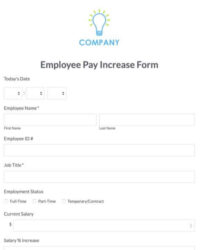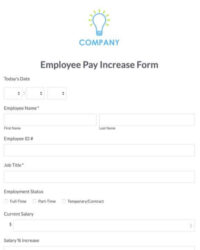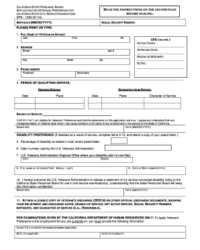Integrating compensation details into application materials offers several key advantages. For applicants, it clarifies remuneration expectations, reducing potential misunderstandings later in the process. For employers, it facilitates efficient filtering and comparison of candidates based on desired salary ranges, saving time and resources. Additionally, this practice fosters open communication about compensation from the beginning, setting a foundation for positive employer-employee relationships.
The following sections will delve deeper into the practical aspects of incorporating compensation information into application templates, including best practices for structuring these fields, legal considerations, and strategies for navigating salary negotiations effectively.
Key Components of Compensation Fields in Application Templates
Effective integration of compensation information within application templates requires careful consideration of several key components. These elements ensure clarity for applicants, streamline data collection for employers, and promote transparency throughout the hiring process.
1: Wage/Salary Range: Providing a clear salary range allows applicants to self-select based on their expectations and helps employers filter candidates efficiently.
2: Pay Frequency: Specifying whether compensation is offered hourly, weekly, bi-weekly, or monthly clarifies payment terms for applicants.
3: Additional Compensation: Fields for bonuses, commissions, or other incentives should be included if applicable, providing a comprehensive overview of the total compensation package.
4: Currency: Clearly stating the currency of payment is essential, especially for multinational organizations or remote positions.
5: Placement/Format: Careful consideration should be given to the placement of compensation fields within the application. A logical flow enhances user experience and ensures data is captured effectively.
6: Legal Compliance: Adherence to all applicable local, state, and national regulations regarding wage disclosure and pay transparency is paramount.
7: Optional vs. Required: Determining whether the compensation fields are mandatory or optional requires balancing the need for data collection with applicant comfort levels.
Strategic implementation of these components contributes to a more transparent and efficient recruitment process, benefiting both applicants and employers.
How to Create an Employment Application with Compensation Fields
Developing an effective employment application with integrated compensation fields requires careful planning and consideration of various factors. A well-structured approach ensures compliance, transparency, and a positive candidate experience.
1: Define Compensation Parameters: Establish clear salary ranges, pay frequencies, and potential bonus structures for each role. This foundational step informs subsequent template development.
2: Select an Appropriate Format: Choose a format online form, downloadable document, or other that aligns with organizational needs and applicant accessibility.
3: Design Clear Compensation Fields: Create dedicated fields for salary expectations, desired pay frequency, and any additional compensation. Ensure clear labels and instructions for each field.
4: Ensure Legal Compliance: Review and adhere to all applicable local, state, and national regulations regarding wage disclosure and pay transparency. Consult legal counsel if necessary.
5: Consider Placement and Flow: Place compensation fields strategically within the application to maintain a logical flow and enhance user experience. Avoid overwhelming applicants with excessive requests early in the process.
6: Test and Refine: Thoroughly test the application to ensure functionality, clarity, and ease of use. Gather feedback and refine the template as needed.
7: Implement and Communicate: Integrate the finalized application template into the hiring process and clearly communicate its use to all stakeholders. Regularly review and update the template to reflect evolving needs and regulations.
A well-designed application with integrated compensation information streamlines the hiring process, promotes transparency, and fosters positive employer-candidate relationships. Regular review and adaptation of these templates ensure ongoing effectiveness and legal compliance.
Strategic inclusion of compensation details within application templates offers significant advantages for both employers and applicants. It facilitates transparency, streamlines data collection, and sets clear expectations from the outset of the hiring process. Careful consideration of legal compliance, placement within the application, and clear communication ensures effective implementation. Building well-structured compensation fields into application materials contributes to a more efficient and equitable recruitment experience.
Organizations are encouraged to review and adapt their application templates regularly to reflect evolving best practices and legal requirements. This proactive approach strengthens recruitment strategies, fosters positive candidate relationships, and ultimately contributes to a more robust and transparent hiring landscape.


